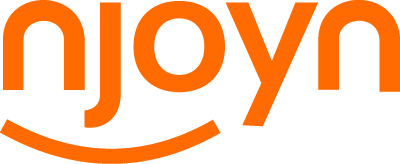
Bridging the Gender Gap in Talent Pipelines
Explore how employers can identify and address gender disparities early in the recruitment funnel—from job descriptions to shortlisting. The post can suggest data-driven strategies, inclusive language practices, and bias-checking tools that help balance candidate pools and support DEI goals. Especially relevant to recruitment platforms and ATS users.
While gradual progress has been made to address workplace gender disparities, gaps remain between the experience of male and female employees and jobseekers. Research indicates that women in the US are paid an average of 15% less than men, while in Canada, the disparity is even higher at 30%. Hiring decisions are also still heavily influenced by gender, particularly in occupations with longstanding gender associations. However, there are various things companies can do to bridge the gender gap and remove barriers for women. Let’s take a look at some of the most effective solutions to overcoming gender disparities and moving to a more equitable employment landscape.
The Recruitment Gender Gap in 2025
So, what does the recruitment gender gap look like in 2025? Jobseeker conducted a survey of 1,000 US employees to ask their views and experiences around hiring, salaries and workplace culture. The results of Jobseeker’s survey revealed valuable insights on the state of the gender employment gap, while offering possible solutions to create a more equitable workplace culture. Some key themes and differences that emerged in the gendered experience of the workplace included:
- Perceived hiring bias: 35% of women suspected they were not hired for a job because of their gender, compared to just 16% of men.
- Impact of caregiving: 15% of women believed they’d been passed over for promotion owing to caregiving responsibilities, compared to just 8% of men.
- Enduring gender discrimination: A quarter of women felt they’d been the victim of gender discrimination in the workplace, compared to 1 in 10 men.
- Pay inequality: Almost 1 in 5 women have experienced gender pay inequity.
- Reduced opportunities after paternity leave: 15% of women experience career disruption after returning to work from paternity leave, compared to 5% of men.
How Can Employers Bridge the Gender Divide?
There are various things employers can do to overcome the enduring gender gaps in the workplace, particularly when it comes to talent acquisition. Here are several tried and tested strategies for tipping the balance towards greater equality in recruitment:
Audit Current Hiring Strategies
Reviewing current hiring strategies and practices can alert the company to engrained biases that could be leading to unequal employment opportunities. Conduct a risk analysis to identify possible gender-related disparities, including analyzing hiring rates, promotion rates and salary data, identifying possible causes, to give the organization a roadmap on how and where to improve.
Deploy Data-Driven Strategies
Ongoing monitoring of hiring practices can provide you with the data required to identify any biases, and correct them if and when they occur. These could include gathering equalities information from candidates or using ATS software and AI tools to process candidate data more objectively, reducing the likelihood of recruiter bias, either conscious or unconscious, from entering the decision-making process.
Introduce Blind Screening
Blind screening practices are one of the key ways to eliminate gender bias, conscious or otherwise, from the recruitment process. ATS software can take away much of the heavy lifting of initial resume screening from hiring managers. Many can also provide anonymization tools to mask personal information on candidate applications, further reducing the likelihood of biases creeping in once human involvement is introduced into the screening process.
Develop Inclusive Language Practices
Introducing inclusive language practices into your organization’s recruitment process can greatly reduce established gender disparities and engrained cultural norms that can introduce bias to the hiring process, even before the vacancy opens for applications. Using gender-neutral terms, focusing on skills and qualities rather than demographics, and being mindful of potential biases in job descriptions and communication can all help to equalize the process and reduce gender bias.
Introduce Bias-Checking Tools
Bias checking tools can do a lot of the hard work of identifying unintended or unconscious biases in the recruitment process, helping to balance candidate pools and support DEI goals. Though there is some variance in what these tools can offer, most can analyze job descriptions, adverts and recruitment documents to identify potential bias, with many using AI to suggest more balanced, inclusive language. You can also deploy bias checking tools to analyze your current workforce diversity, conduct blind screening or even provide video interview platforms and blind assessments to reduce the risk of bias creeping in at those stages.
Use diverse interview panels
While tech can significantly improve gender equity in the recruitment process, there are other basic steps organizations can take to ensuring a more representative workforce. Introducing guidelines and regulations around the makeup of your interview panels, such as requiring a gender-balanced panel, is one way to ensure a fairer, less biased screening process.
Provide Flexible and Inclusive Work Environments
Another way to make workplaces and job opportunities more gender-balanced is to provide and promote flexible and inclusive work environments. Rigid, inflexible approaches based on traditional, office-based workplace culture is highly likely to alienate and exclude more female than male candidates, owing to the enduring differences in caregiving responsibilities between the genders. Fostering a culture that’s open to flexible working and embraces DEI initiatives can make workplaces far more accessible to female candidates.
Search
Most Popular Posts
- 5 Recruitment Challenges Public Organizations Struggle With
- ‘People Enablement’ Is the Human-Resources Trend You Can’t Ignore
- 5 Tips to go from Interview to On-boarding with the Right Candidate
- Njoyn’s New Interview Scheduling Module
- Challenges The City of St. Albert Faced Before Implementing an Applicant Tracking System
150 Commerce Valley Drive West. Markham, ON. L3T 7Z3. Tel: +1 416 553 6756
